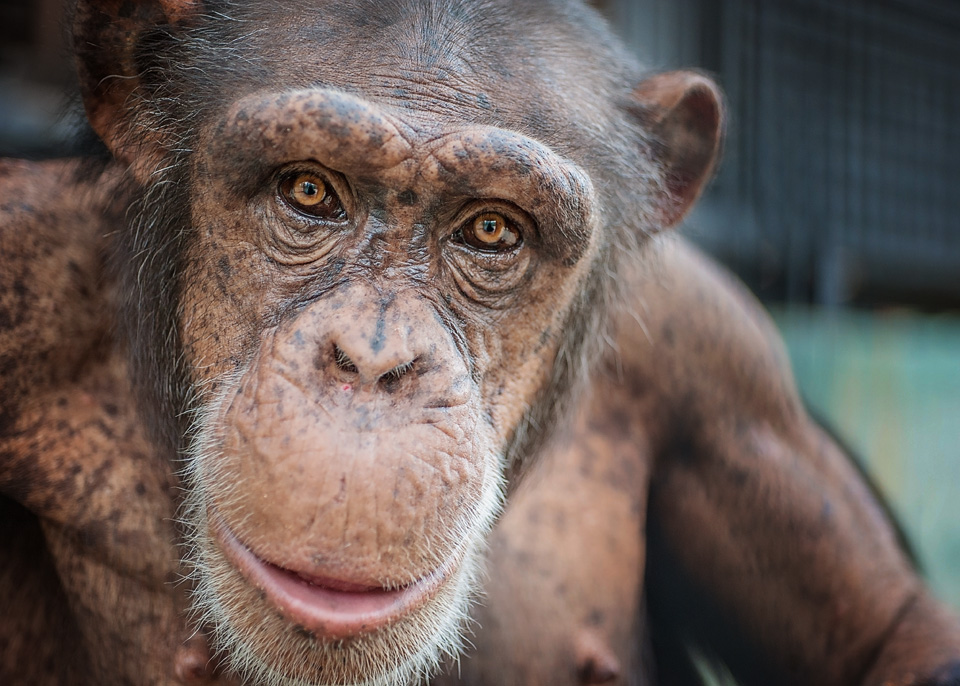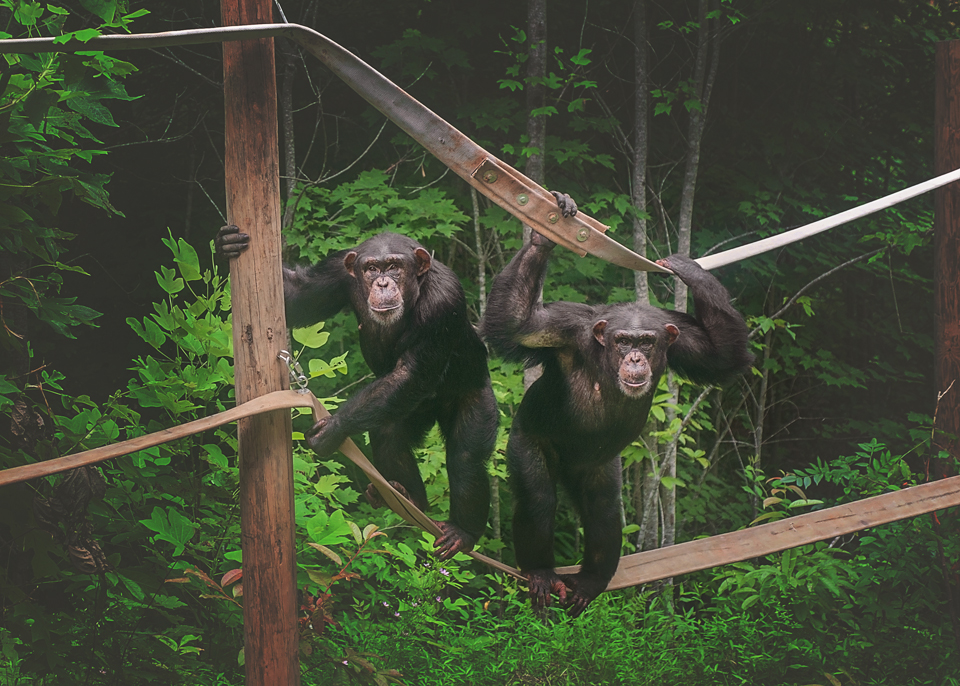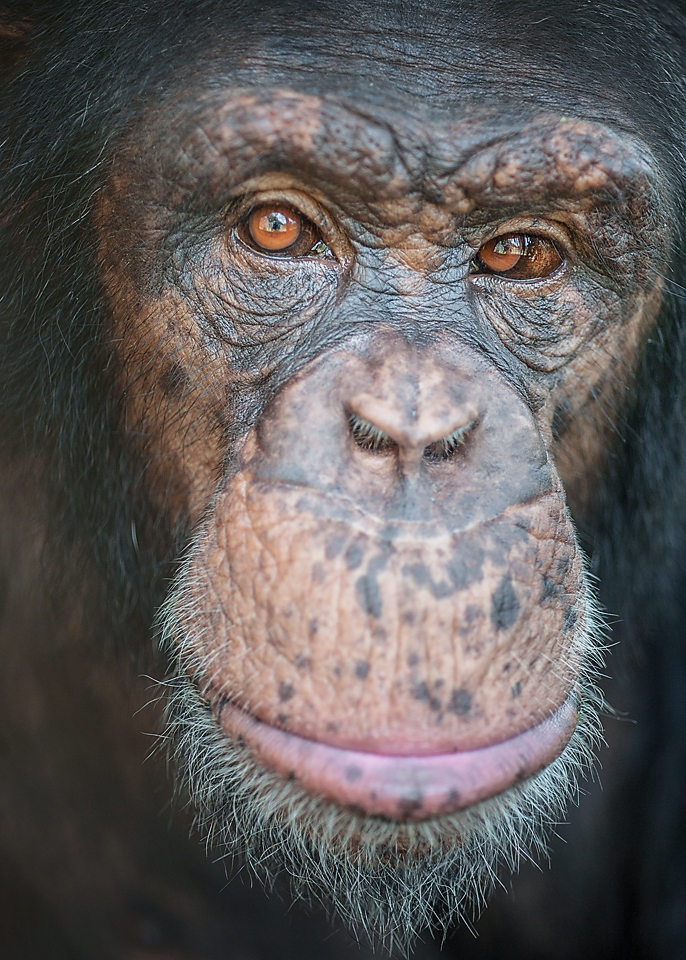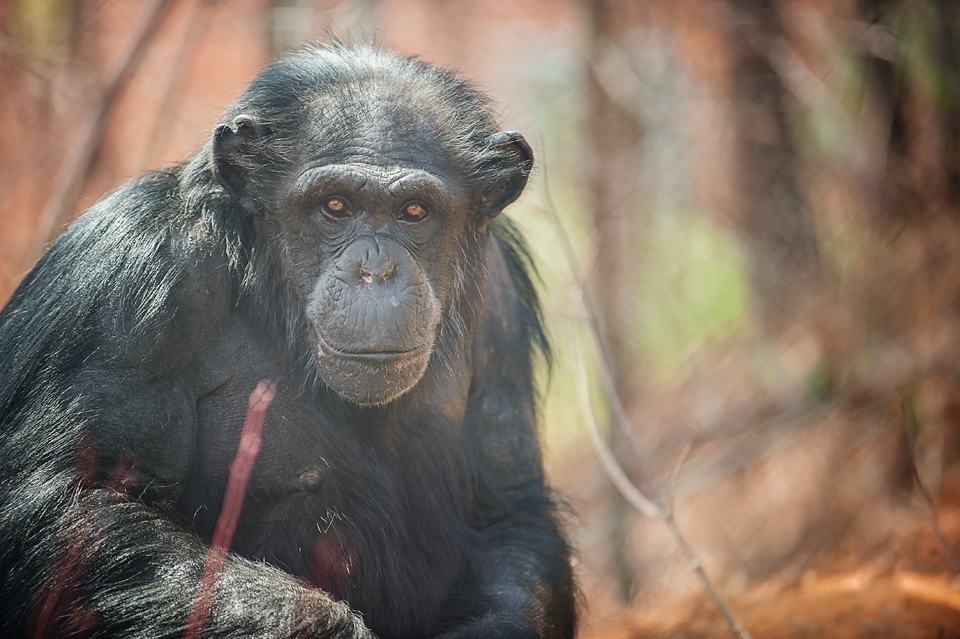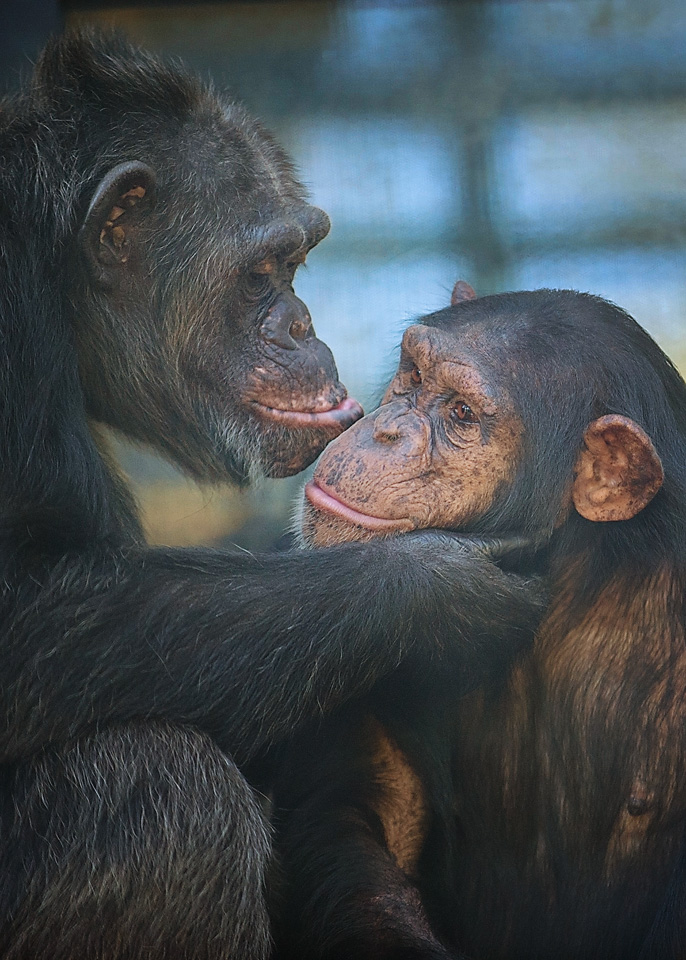
Behind the Lens: How to Photograph Chimpanzees
On World Photography Day, we asked our talented chimpanzee caregiver and photographer, Crystal Alba, to talk about how she photographs the residents of Project Chimps. Crystal’s images include candid, intimate portraits of the chimps that help us connect with our friends and followers, allowing them to peek behind the scenes at the sanctuary. Here, Crystal shares her techniques and some of the special moments behind some of our favorite photos:
“I have the privilege of working with the chimps every day and earning their trust. That, along with my safety training as a caregiver, enables me to shoot photos through the mesh of their porch or bedrooms. Many of the close-up portraits I take are shot on the open-air porches of the chimp villas.
“Chimps are very aware that the mesh is a barrier between their world and ours and they are protective of their space. So placing a big, loud camera against that barrier could be seen as rude, intrusive, or threatening.
“When meeting a new group of chimps, I try to dedicate time to getting to know them and letting them look at my camera before I start taking photos. I push buttons, focus the lens, take things apart, and open up my camera bag, all where they can see and hear what I am doing. Sometimes I just quietly sit with them while they go about their business so they can see I’m not a threat. Eventually, I can start snapping photos with little attention from the chimps. Noel is totally used to my camera and is always willing to let me snap a photo.
“Nonetheless, I have to be aware of my surroundings. A chimp could be beside, above, or below me at any time, and their movements are fast and silent. Even if the chimp I’m photographing is calm, another chimp could drop down from above, ready to poke or grab.
“Being aware of the group dynamics is also essential. If the chimps are having a dispute, it’s not a safe time for photos. We have a few residents who simply do not like the camera, like Sky. I only photograph her from a distance when she’s in the habitat. This photo was taken with a 200mm lens to give her plenty of space so she does not feel threatened.
“If you visit the sanctuary on Discovery Days, for a donor tour, or as a volunteer, you will have the opportunity to take photos through the habitat windows. I’ve gotten several great shots through these windows and have found a few tricks that help with shooting through the thick glass. You’ll find similar setups at zoos and aquariums so these tips also apply in those environments.
“First, I highly recommend a rubber lens hood. It’s an inexpensive piece of equipment that makes a huge difference because it totally eliminates reflections from the glass. If you’re shooting with a phone, you can sometimes use your hands to make a similar seal around the lens piece.
“When I’m setting up to shoot through the habitat windows, I make sure my rubber lens hood is attached, and then I prepare to shoot straight ahead through the window. Shooting at too great an angle through the glass causes distortion. If I see a chimp heading in the direction of the window, I wait until they’re right in front of the glass to snap.
“If I’m taking photos at a zoo or other facility where the animals don’t know me, I’m always careful to gauge their reaction. If the camera seems to be upsetting them in any way, it’s time to stop. The photo of Charisse and Buttercup, above, was taken through the habitat window with my 60mm lens.
“There are two lenses I use almost exclusively for all of my animal photos: the Nikon 70-200 f/ 2.8 and the Nikon Micro 60mm prime lens. The micro lens is great for capturing details in close-up shots. This photo of Leo was taken with the 60mm lens.
“The 70-200mm lens is my go-to for habitat shots. And since it has a low f-stop, you can get the beautiful blurred background while maintaining sharp focus on the subject, which is any photographer’s goal with portraits.
“A big part of getting good photos of the chimps is being a good observer, a tactic which also applies to visitors taking photos at the windows. Sometimes you just have to patiently watch for a great moment. Even if you just have a few minutes to stop at a window, I recommend resisting the urge to snap away.
“Thinking about the right time to snap a photo can be the difference between several blurry shots and a single great capture. This photo of Emma was taken when she looked in the kitchen window. She had been walking near the window and I suspected she might peek in, so I got my camera ready for the anticipated moment.
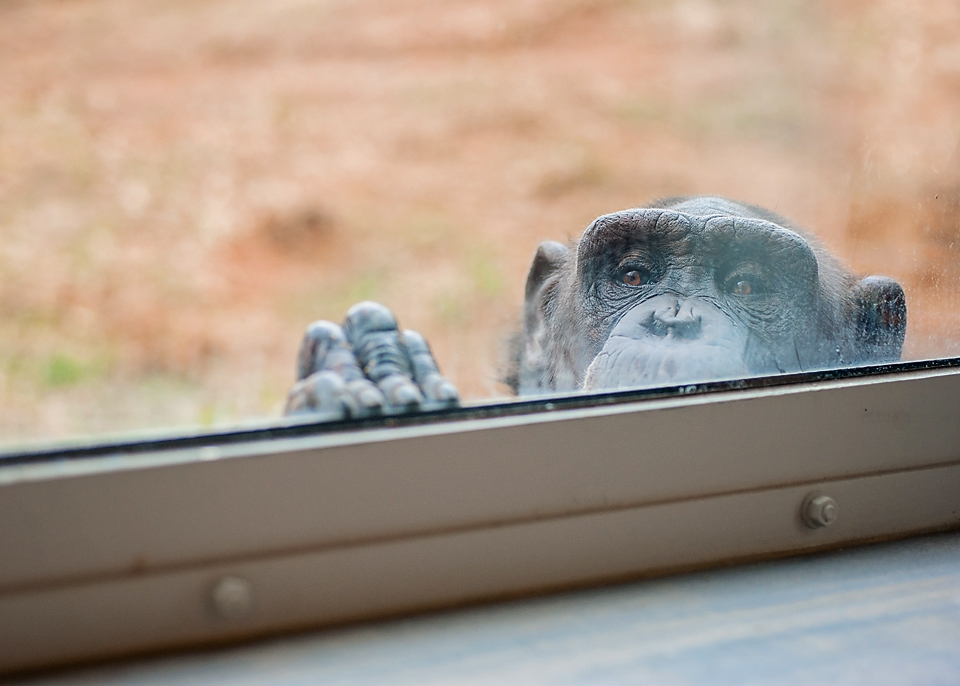
Crystal waited for just the right moment to capture this picture of Emma peering into the kitchen window at Project Chimps.
“I’ve found if I wait long enough, I can catch a grooming or play session, napping, or nest-building. If I want a good close-up portrait, I’ll try to sit quietly with that chimp, either observing or calmly interacting with them. Then, sneaking in a quick photo isn’t too disruptive. Sometimes I’ll even turn it into a game of virtual chase, depending on the chimp and what they want to do.
“Most of all, I always keep in mind that I’m in their space and I need to respect that. My primary job as a caregiver means my priority is always the chimps’ well-being. In the end, a relaxed, happy chimpanzee is always a great photo subject.”
Our thanks to Crystal for sharing her approach to photographing the former research chimpanzees at Project Chimps. If you’d like a chance to see them or photograph them, join us for our Discovery Days events, held twice a year.
You can also see more of Crystal’s photos on our Facebook, Instagram and Twitter pages.

